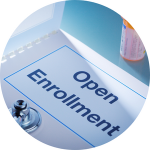Checklist: Making the Most of Employee Benefits During Open Enrollment
Annual open enrollment is a great time to review your health plan, insurance options, and other benefits offered through your employer. Open enrollment periods vary by employer, but they often happen in the fall, when new benefits begin on January 1. Here are some helpful steps to making the most of open enrollment.



